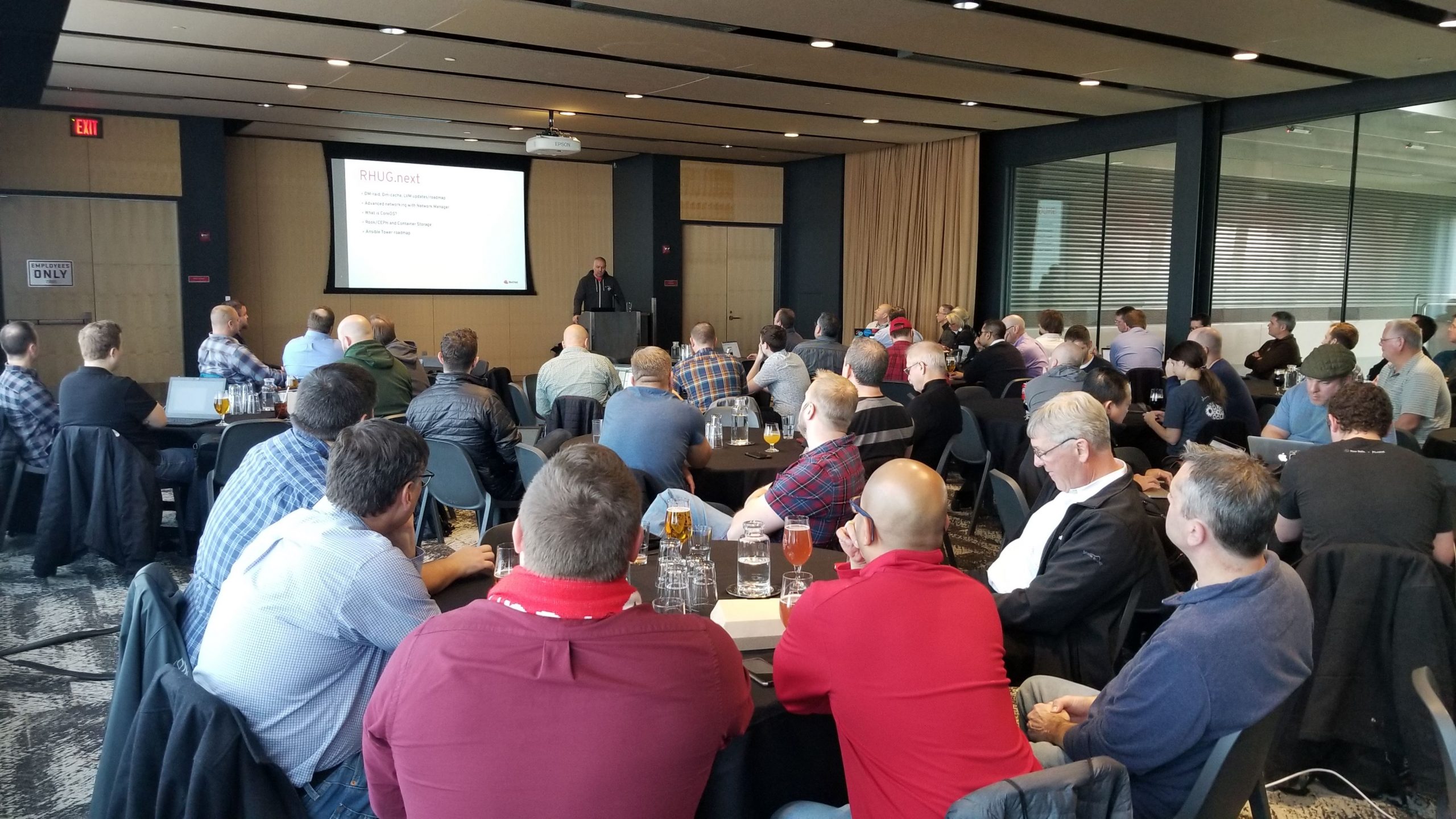On Tuesday, Nov. 5, Red Hat hosted a Red Hat User Group (RHUG) at Surly Brewing Company in Minneapolis, where attendees heard a technical presentation about Azure Red Hat OpenShift (ARO) from two of our Microsoft directors, Steve Holstad and David Palfery.
The RHUG format provides a space for attendees – regardless of skill level or area of interest – to network with peers, learn about new open-source software, and teach others about Red Hat solutions.
Tuesday’s Minneapolis RHUG was very well attended and provided a unique setting for the discussion.
Key business drivers for IT leadership:
Business Drivers
- Adopting solutions that are certified, validated, and supported by enterprise service-level agreements (SLAs), services, and support
- Boosting innovation with existing skill sets and investments
- Accelerating time to value for new products and services
Operations Drivers
- Integrating new technologies into existing pipelines and tools
- Ensuring all applications meet deployment and security requirements
- Ensuring compliance across all operations and infrastructure
- Improving management and deployment efficiency with automation
Development Drivers
- Moving projects from development to production quickly and easily
- Implementing microservices, web-scale applications, and containers
- Quickly deploying desired tools from a central repository
- Gaining access to resources quickly and easily
The current version of OpenShift (v3.11.146) has a number of unique capabilities, including logging aggregation into Azure’s implementation. Logging data can provide insights about your applications and help you troubleshoot past problems or prevent new ones, improve application performance or maintainability, and automate actions that would otherwise require manual intervention.
Azure logs are categorized into three types:
- Control/management logs provide information about Azure Resource Manager create, update, and delete operations
- Data plane logs provide information about events raised as part of Azure resource usage
- Examples: Windows event system, security, and applications logs in a VM; diagnostics logs that are configured through Azure Monitor
- Processed events provide information about analyzed events/alerts that have been processed on your behalf
- Example: Azure Security Center alerts where Azure Security Center has processed and analyzed your subscription and provides concise security alerts
The next version of OpenShift will have Azure Monitor Integration – currently, you need to install your own sidecar pattern if you want to pull from standard out or use application insights in your code. OpenShift 4.x will provide a streamlined process for this manual workaround.
As part of their presentation, Steve and David also presented an OpenShift on Azure eShop demo that fully demonstrated the features of OpenShift. The demo outlined how to:
- Deploy to ARO
- Production-grate routes, certificates, and domains
- 100% Azure DevOps automation through builds and release pipelines
- 19 services/pods – provide real-world complexity
- Integration with Azure PaaS services through open service broker
Interested in finding a RHUG in your area? Click here for a list of future Red Hat events.

